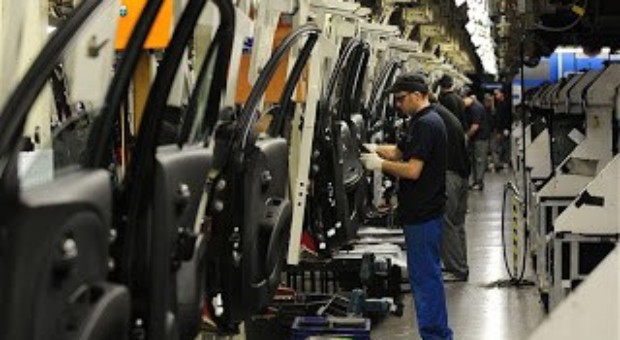
 |
| The Decline of the British Car Industry |
The car industry in the UK was once very robust, and set the bar high with its sophistication and prestige.
With pantheon names like Jaguar, Rolls Royce, and Bentley inspiring pride in its citizens, Britain had something of importance to brag about in the auto industry.
Nowadays, the British Isles can boast little more than the production and manufacture of car accessories, kits and improvements.
What happened?
In 1960, there were one million people making vehicles in Britain, and that meant more than 5% of the population was gainfully employed building cars.
Add to that the numerous showrooms and suppliers, it is clear enough to see that the auto industry at that time was doing its part to support the nation’s economy.
However, it must be noted that even through this success, management of the largest carmakers in Great Britain were unable to quickly adapt to the many market changes and they were intermittently met with the unrelenting demands of labour unions. The plants were over-manned and therefore mostly unprofitable.
These companies lacked enough flexibility to compete with other European makers who flooded the market with their own versions of right-hand drive cars. Along with that, the British vehicles typically did not meet the technical standards required for markets abroad.
The highly thought of champion of the UK in 1967 became British Leyland which was created through a merger between the final British car manufacturing survivors, Morris, Austin, Triumph and Standard. The pride felt during the height of motor manufacturing success soon lost its hold on the people and government had to step in to save Britain’s face.
Even though this merger created a much larger entity, this did not solve the problems faced by numerous losses, including losing market to Ford. In 1975 nationalization of British Leyland took place as government would not allow it to die.
The term ‘too big to fail’ certainly describes what happened here.
The UK government did what they could with this industry to try lifting up regions they considered deprived by moving the industry to these areas and provided grants for creating jobs.
British Aerospace eventually acquired British Leyland in 1988 and then six years later sold it to BMW, and in 2000 a consortium in the nation picked it up, but later lost enough money to finally let Chinese firms buy the plant and its designs. Following suit were Bentley and Rolls-Royce which sold out to BMW and Volkswagen. Ford bought Land Rover and Jaguar and later sold them to India’s Tata, the Peugeot plants that had been bought from Chrysler were closed.
Today, there is still car manufacturing taking place in the UK but the owners are not British. As a matter of fact 1.65 million autos were produced in 2008. Britain citizens certainly appreciate the participation of foreigners for propping up the economy, but they would prefer doing that for themselves.
There remain 800,000 jobs in the auto industry in Great Britain today. 180,000 of those involve manufacturing with 106,000 making components. The component side of the auto industry has found ways to adapt and survive with expansion into new area although over the years there have been many firms affected and ruined by the loss of manufacturing in the UK.
The UK currently has 2,000 companies making motor parts, with 19 of them being in the top 20 firms around the world, and continues to play an important role in Europe’s auto industry.
The auto industry continues to be a key part as Britain balances its books in the financial arena, which is the nation’s largest producer of revenues. Although it is said that 80 per cent of autos sales in this country come from imports, as many as three quarters of those manufactured in the UK are exported.
The auto industry may not be currently as important to the economy of the UK as it is for the US, but it does matter greatly especially with the overall decline in manufacturing, industry and mining since the 1970’s. As with most global economy’s, the UK will have to find a way to adapt and survive even with the huge changes and insecurity of the global financial market and the shift in manufacturing away from the West and to the East.
Author: David Young has lived and breathed petrol since he was a boy, both a car enthusiast and aficionado; David is most at home with his head underneath an exhaust pipe. Having worked as a mechanic for most of his young life, David now works for CarAccessoriesPlus.
















